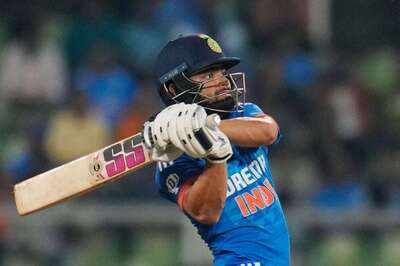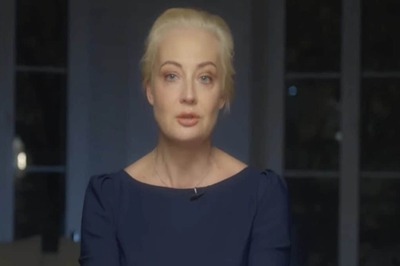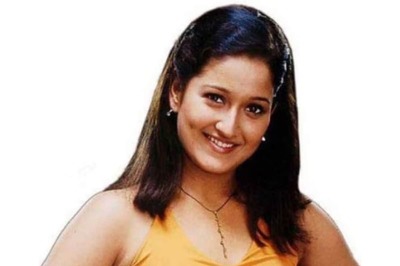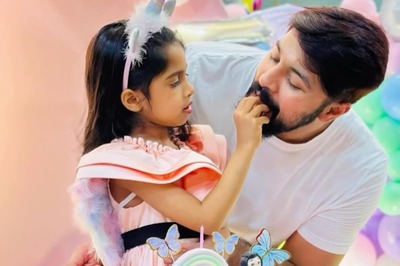
views
New Delhi: The larger political crisis in Tamil Nadu may be far from over but Chief Minister Edapadi Palaniswami has won the trust vote and has a chance now to entrench himself into the system. Over 90 governments in India have been dismissed since Independence, but several CMs like EPS have survived. News18 looks at CMs who weathered political storms to survive the trust vote.
C. Rajagopalachari, Madras, 1952
Tamil Nadu experienced its first tryst with a constitutional crisis as early as 1952, when the first elections of independent India were held. While the Congress was sweeping elections across the political landscape of the country, in Tamil Nadu, then known as Madras State, it was reduced to a minority. With 152 MLAs out of 375, the party was nowhere close to the ‘magic figure’ of 188 needed to form government. Though, it was still the single largest party in newly-elected Assembly.
It was at this point that Governor Krishna Kumarsinhji faced a tough choice – invite the single largest party to form the government or impose President’s Rule. After days of indecision, the Congress party looked to a 73-year-old stalwart who was in retirement – C Rajagopalachari. The Governor nominated Rajagopalachari, or ‘Rajaji’ as he was colloquially known, to the Legislative Council and on April 1, 1952, invited him to form the government. Ten days later, he was sworn in as Chief Minister but he did not have to take the floor test for another three months. This gave Rajaji enough time to engineer defections in the non-Congress front called United Democratic Front (UDF) and by July, he had 200 MLAs supporting him. Thus, Rajaji became the first Chief Minister to survive the trust vote.
Janaki Ramachandran, Tamil Nadu, 1988
When the death of J Jayalalithaa threw Tamil Nadu into turmoil this year, a sense of déjà vu gripped the AIADMK. The death of party icon MG Ramachandran in December 1988 had resulted in a similar tug-of-war between Jayalalithaa and MGR’s wife Janaki Ramachandran. Thirty three of the 131 AIADMK MLAS had thrown their weight behind Jayalalithaa. The Congress, with 61 MLAs, decided to stay neutral and 16 of DMK’s 24 MLAs stood suspended. Five Congress MLAs rebelled against their party line when they learnt that Rajiv Gandhi had opposed the motion and that led to violence in the Assembly. The violence went on for an hour till the police was called in to lathi-charge at the MLAs. Over a 100 microphones were broken and 20 legislators were injured. The trust vote soon resumed, which Ramachandran eventually won. The victory, however, lasted only 24 days since the Centre, then led by Prime Minister Rajiv Gandhi, suspended the state government. Fresh elections were held in 1989 and the DMK rode to power. Jayalalithaa, who had gained control of the AIADMK by this point, was the new leader of Opposition.
Kalyan Singh, Uttar Pradesh, 1997
In September 1997, Kalyan Singh of the BJP was sworn in as Chief Minister for the second time after support from the Bahujan Samaj Party (BSP). By November, however, the BSP withdrew support and Singh was asked to prove his majority on the floor of the Assembly. While Kalyan Singh survived the trust vote, the incident has become infamous for the violence that preceded it. Pramod Tiwari, the Congress Legislative Party (CLP) leader, demanded a lobby division of votes and that led to an ugly brawl in the house. A group of angry BSP MLAs hurled a loudspeaker at the Speaker and soon, MLAs were throwing microphones, glass, paperweights and chairs at each other. Several legislators were injured in the fighting. Around noon, the Opposition was evicted from the House and Mayawati joined several Opposition leaders in a protest outside Raj Bhawan. Meanwhile, the trust vote continued inside the House, which Kalyan Singh won comfortably.
Arvind Kejriwal, Delhi, 2014
Barely a year old, the Aam Aadmi Party (AAP) decided to contest its first ever elections in Delhi in December 2013. Defying expectations, the AAP won 28 seats, just three less than the BJP which was the single largest party with 31 MLAs. All parties, however, fell short of a majority in the 70-member House and this resulted in a hung House. Lieutenant Governor Najeeb Jung first invited the BJP to form the government but they refused, claiming they couldn’t cobble together a majority. Jung then invited AAP leader Arvind Kejriwal to form the government. Kejriwal wrote to both Rajnath Singh and Sonia Gandhi, seeking clarifications on 18 issues before seeking their support. The AAP also sought public opinion on whether they should form the government. The BJP did not reply to the letter and Congress agreed to 16 of the 18 demands. On December 28, Kejriwal was sworn in as CM and asked to prove his strength on the floor. On January 2, a trust vote was held in the Delhi Assembly, which Kejriwal won by a margin of 37-32 with outside support from Congress. The government was short-lived as Kejriwal resigned after 49 days. In 2015, fresh elections were held in which AAP recorded a historic win by sweeping 67 of the state’s 70 constituencies.
Nitish Kumar, Bihar, 2015
In 2014, after Bihar CM Nitish Kumar exited the National Democratic Alliance (NDA) post Narendra Modi’s elevation as the Prime Ministerial candidate. In the Lok Sabha elections that followed, the JD (U) faced a drubbing and could only manage to win two seats out of 40. Kumar took responsibility for the debacle and quit as CM, appointing his colleague Jitan Ram Manjhi as CM. Soon, however, Manjhi lost favour with Nitish and was asked to step down. Manjhi refused and this led to a political crisis in the state. Nitish was elected as the JD(U) Legislative Party leader, a development that was stayed by the Patna High Court. He demanded a floor test and paraded 128 MLAs in front of Rashtrapati Bhawan in New Delhi. The Governor asked Manjhi to prove his majority on the floor of the House on February 20. Despite BJP’s pledge of support, Manjhi quit as CM just hours before the trust vote. Nitish Kumar was then invited to form the government. In March, the BJP staged a walkout during the floor test and Kumar won the vote with a margin of 140-0.
Harish Rawat, Uttarakhand, 2016
The Constitutional crisis in the hill state of Uttarakhand began in March last year when nine Congress MLAs, including former CM Vijay Bahuguna, rebelled against the party and demanded the dismissal of the Harish Rawat government. Governor KK Paul took cognizance of the MLAs’ demands and asked Rawat to prove his majority. Meanwhile, the nine Congress rebels were suspended under the anti-defection law as the state prepared for the floor test. Just days before the trust vote, however, the Centre imposed President’s Rule in Uttarkhand. The Congress termed the Centre’s move as “murder of democracy” as Harish Rawat moved the Nainital High Court against President’s Rule. On April 21, the HC ruled in Rawat’s favour and set aside President’s Rule, criticizing the Center in terse terms. The Centre then appealed against the HC verdict. On May 6, the SC upheld the Nainital HC verdict and ordered a trust vote on May 10. With the rebel MLAs suspended, the total strength of the house came down to 61. After months of political turmoil, Rawat finally emerged victorious in the floor test and was reinstated as CM. On February 15, the people of Uttarakhand voted in fresh elections and the results will be announced on March 11.



















Comments
0 comment